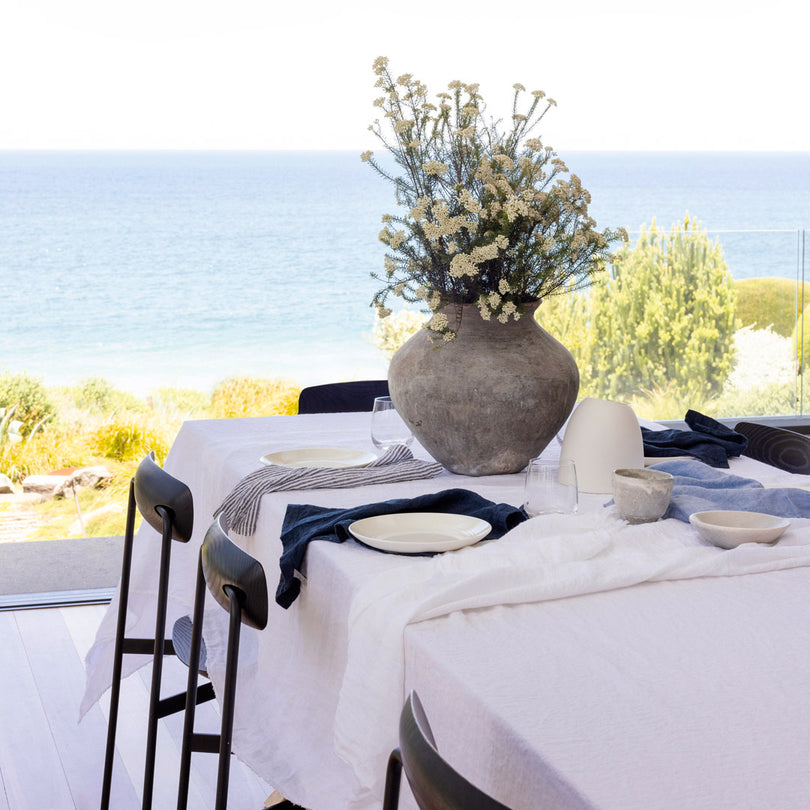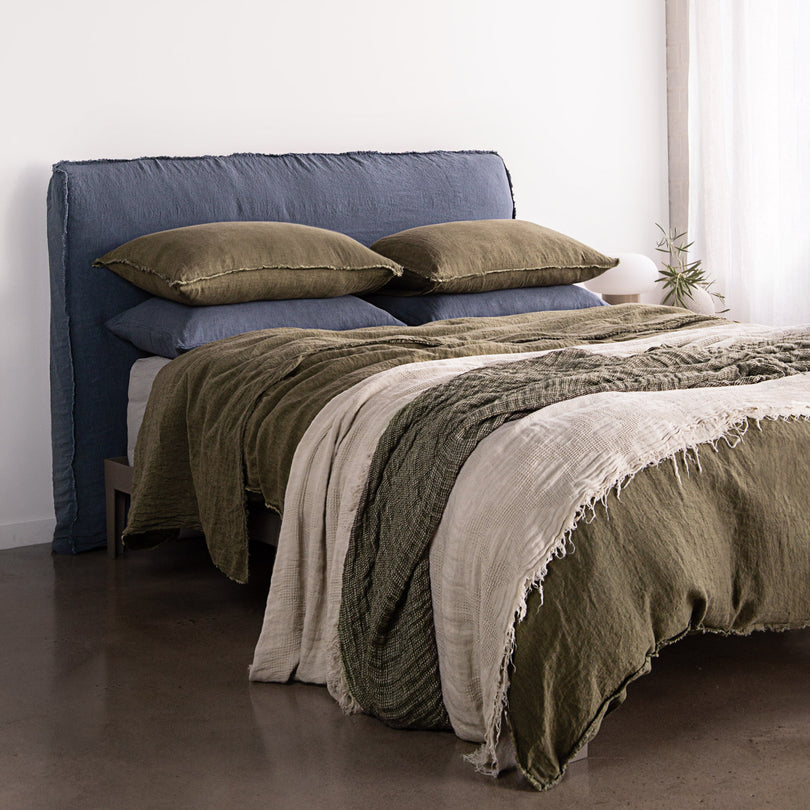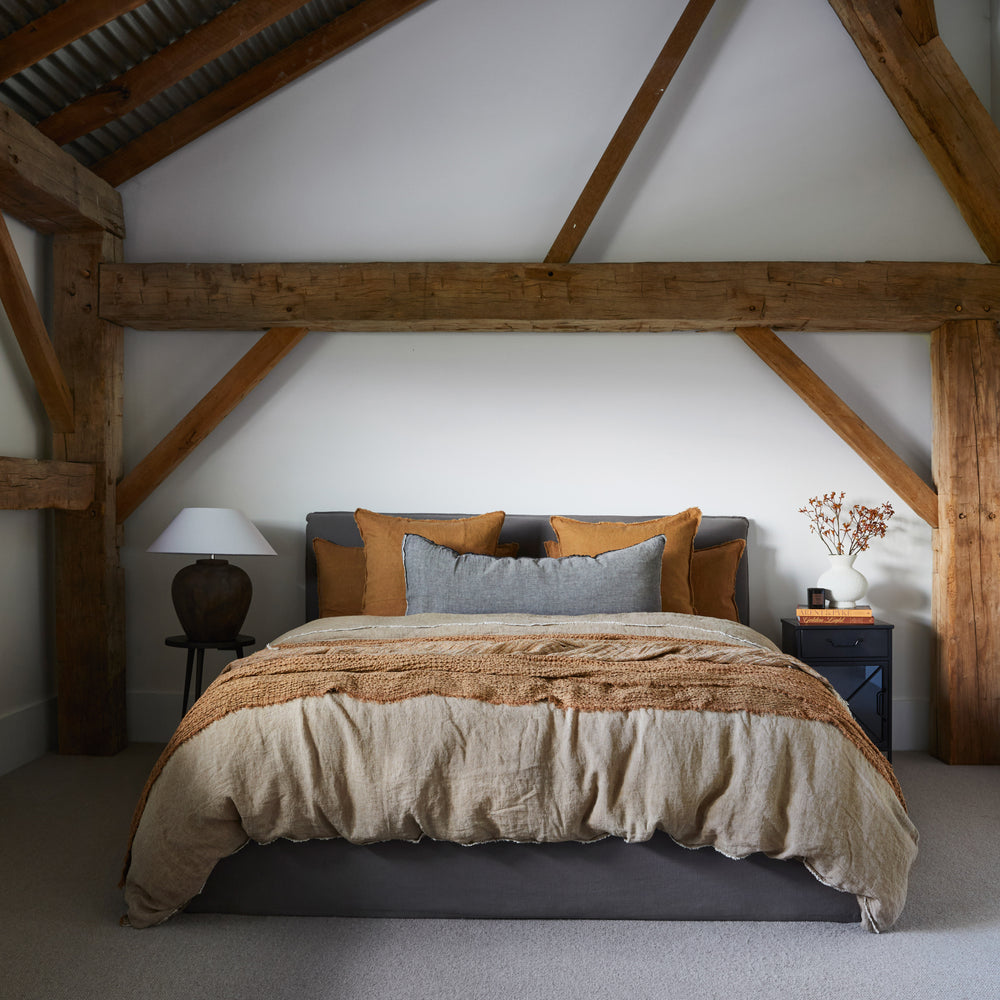
Satellite Island, Tasmania
Years ago I was lucky enough to travel to Tasmania for the very first time. I was amazed by the raw beauty of it and I inevitably fell in love with it right from the start.
One of the many great things about Tasmania is its history and rugged coastal beaches that still seem untouched to this day, many of these places are small islands off the main land where you can visit. One of Australia’s best kept travel secrets is Satellite Island, about a 40-minute drive from the Bruny Island ferry terminal and a five minute boat trip across the D'Entrecasteaux Channel. If you have ever dreamed of owning your own island here is your chance to experience that feeling for your very self.
Satellite Island is owned by Melbourne based couple, Kate and Will Alstergren and is one place that everyone should have on their bucket list. The island, which some say is at the ‘end of the world’ is part of the Partridge Island Group, lying close to the south-eastern coast of Tasmania surrounded by an ancient fossil clad rock shelf, home to an array of local shellfish, including crayfish, native scallops, abalone and oysters.
The isolation of Satellite Island does not mean all of life’s comforts are left behind. In fact, just the opposite. Satellite Island is the definition of modern luxury when it comes to styling and design. Interior Stylist Tess Newman-Morris, along with owner Kate create the ultimate getaway by using calm beachy neutral tones, deep greys and blues and soft luxurious throws and linens by us here at Hale Mercantile Co. We spoke with Kate about the island and what draws visitors here from all over the world.
What is it about Satellite Island that draws visitors here from all over?
It is hard to say but our guest book is filled with comments about the peace, the perfect isolation, the beauty of the rock shelf, the secret coves, open fields, the night sky, the sense of having the whole world to yourself. Guests love the understated luxury of the Summer House and the Boathouse and the beauty of the surrounding Tasmanian wilderness. There are no time frames on the island, no breakfast cut off, you set your own clock. There is no one to grab that sun lounge next to the water first. All these things combine to connect you to what is real in life and silence what is not. The experience is one of complete relaxation. These things draw visitors to the island.
Who are the typical travellers that are attracted to Satellite Island?
We have many couples visiting for holidays, anniversaries and getaways. We have had many very special wedding proposals during stays, which are always wonderful. There are also families visiting for special occasion birthdays, groups of friends and solo travellers. We have many international guests and many from interstate.
Is there a part of the island that you love the most?
I adore the Boathouse. I love sleeping there with the doors wide open, the sea gently lapping underneath and the stars twinkling above. The top of the island is also a favourite spot. I always take a deep breath here, as this spot fills your soul. From here you have a 360 degree views of Bruny Island, the Hartz Mountains and the beautiful D'Entrecasteaux Channel. In winter the snowcapped mountains are heaven and in summer the sunsets are breathtaking. And then there is Last Glimpse Point on the southern most tip of the island. Here as you look towards Antarctica, the island's sheer cliffs fall away to the rock shelf and the Southern Ocean below. There is a silence here and, immersed in nature, you marvel at the beauty of the world.
What goes into the process to the select the brands that you choose to represent you on the Island?
We have carefully chosen the brands we use on the island. We have chosen natural products that all complement the understated luxury of the island aesthetic. They are brands that reflect care, simplicity, luxury, truth, beauty, quality, passion and have a connection to nature. That is why we use and love Hale Mercantile. Pure European linen is a beautiful natural product using the finest flax and produced with care and passion. We adore the colours of Hale Mercantile's linen bedding as they reflect the beautiful natural colours of the island and the surrounding wilderness.
How would you describe Satellite Island in five words?
Haven. Pure. Wilderness. Wild. Untouched.
Kate sweetly ended our chat with; “I agonised over the 5 words... and realised that magic was definitely one of them I forgot to put down. There is definitely a magic there!”
STAYING THERE
Accommodation can accommodate up to 12 guests. The Summer House sleeps 6 guests across three bedrooms with a king-sized main bedroom. The boat house has two bedrooms and is located right on the jetty’s edge. If you are feeling more adventurous, you can try glamping under the stars in a queen sized bell tent.
GETTING THERE
Virgin, Tiger, Qantas and Jetstar all fly to Hobart and Satellite Island is a five-minute boat ride from Bruny Island’s hamlet of Alonnah which is a 40-minute drive from the Bruny Island ferry terminal. Guest are then met by the Island Manager who transports them to the Island by boat.
READ MORE
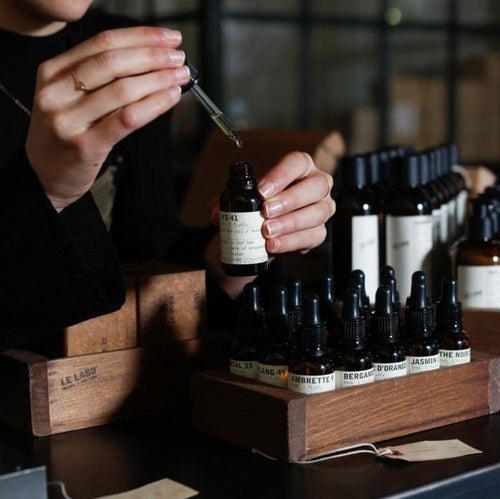
Le Labo – Melbourne
Nowadays, you can walk into any chemist, supermarket or department store and purchase a bottle of perfume. There is such a huge range on offer so what is it that sets one perfume company apart from the other? At Hale, we believe that it has a lot to do with the integrity and ethos of a brand and when we came across perfume company Le Labo, we knew they were the real deal.
Le Labo perfumery first opened in the Nolita neighbourhood of Manhattan in the USA back in 2006. Since opening, they have obtained a cult following and in March 2017, they launched their Melbourne store located in the trendy suburb of Fitzroy. Lucky us!
Le Labo believe that the world should be filled with soulful fragrances and not just more bottles of perfume, and that the future of perfumery lies within the craftsmanship of each individual fragrance. Each scent becomes identifiable as a Le Labo creation, when you pass a person in the street, or share a lift with someone that is wearing Le Labo, you know without doubt where they've purchased their perfume from.
When purchasing direct from the Le Labo store, you will not only receive a beautiful bottle of perfume or candle, you get the whole integrated experience. You select your scent which is then blended in front of you and you can have a customisable label attached to each bottle or candle making the whole experience one of a kind and the perfect gift for someone special or just to spoil yourself.
The Le Labo range has over 100 vegan fragrances and are especially renowned for their unisex fragrances, candles and perfumed oils. Their Melbourne store is located at 183 Gertrude Street, Fitzroy and they recently opened their Sydney flagship store at 68 Gould Street, Bondi Beach. Both stores stock the full Le Labo range.
READ MORE
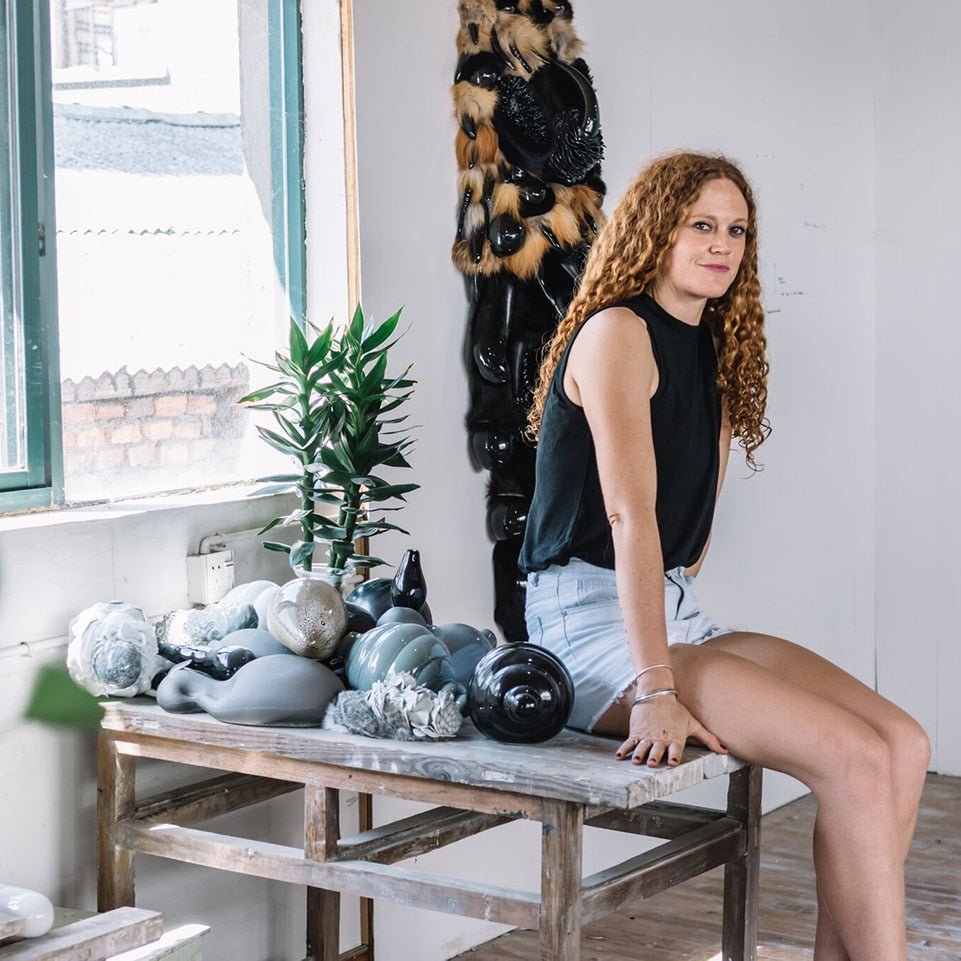
Take Five with Juz Kitson
Juz Kitson is a ceramicist from Sydney’s Central Coast who has been based in the Chinese city of Jingdezhen (often known as the world renowned porcelain capital) for the last 6 years. Kitson uses her fascination with organic forms to create objects of unsettling beauty.
Her work consists of wall sculptures, taxonomic collections of small works displayed in groups usually built around that enduring signifier of love, death and desire – the heart. Just as Kitson’s sculptures appear undefined in their very form, they also blur the barriers between living and decaying.
We are absolutely fascinated with Juz’s work here at Hale and we were so lucky that she was kind enough to ‘Take Five’ with us and give a rare insight into her fascinating world.
HMCo: Tell us a little bit about your background – what path led you to what you’re doing now?
I learnt from a very early age that I wanted to pursue a career in the arts, attending art school at The National Art School in Sydney and surrounding myself with an eclectic group of people from all walks of life meant I was exposed to a lot about art, music and culture. Originally I wanted to pursue photography but I became sidetracked by the endless possibilities of ceramics and have never looked back.
HMCo: What does a typical day of yours involve?
A typical day doesn’t exist in my world. I thrive on chaos and tend to be ‘go go go’ all the time. I lead a very nomadic lifestyle, constantly moving; I need a lot of visual stimulation to make the type of work I do. The different landscapes and cultures I surround myself in influences the type of work I make.
A day involves; a coffee of course, healthy breakfast, yoga or a walk with my Tibetan spaniel, check emails, a few phone calls and then straight into the studio. My work is incredibly labour intensive and often demands 10-16 hour work days. I’m a night owl, so often I burn the midnight candle.
HMCo: Who inspires you inside & outside the design world?
I’m inspired by strong independent women in the contemporary art scene. The artists Patricia Piccinini and Del Kathryn Barton, the gallerists Jan Murphy and Roslyn Oxley, the curator Alexi Glass, the writer Miranda Darling and Chinese artist Cao Fei based in Beijing.
HMCo: Which other Australian designers, artists or brands are you loving at the moment?
I’m loving Skarfe at the moment, based in Sydney’s Potts Point and working collaboratively with artists to produce the prints for their beautiful scarves.
In terms of ceramics I’m a big fan of my fellow contemporaries like Brendan Huntley, Lynda Draper and Glenn Barkley. All pushing the traditional notions of a medium steeped in history onto a contemporary platform.
HMCo: What would be your dream creative project?
Most of my work to date has been site specific within the white cube gallery space. A dream project would be to cover an entire facade of a beautifully designed architectural building with hand built porcelaneous objects or to create a major suspended ethereal installation in a foyer with objects illuminated with LED Lights.
HMCo: While you are based o/s - what do you miss most about Australia?
I’ve been based in Jingdezhen China for 6 years - for me it’s the hustle and bustle I’m attracted to there, the realisation of ideas in a short period of time and accessibility to materials and processes. It’s a fast paced life and I thrive on it, although I often miss the Australian bush, the diversity of our land here is like nothing I’ve seen elsewhere in the world.
READ MORE
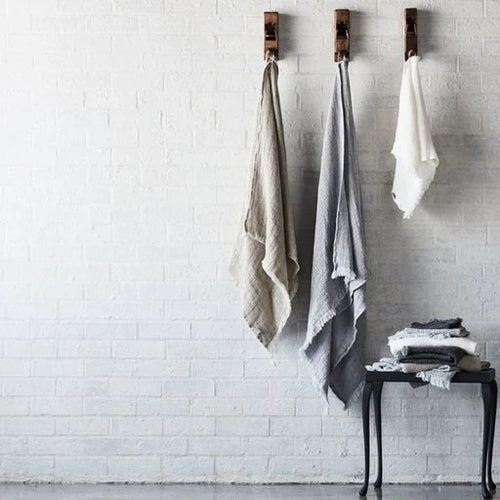
Top Tips Storing & Caring For Towels
Keeping your luxury linen towels in perfect condition is important to ensure your towels stay fresh for years to come. Here we provide some tips to ensure maximum softness, absorbency and longevity.
It’s important to wash and rotate your towels regularly to ensure build-up of oils and bacteria is minimised. For best results, we recommend washing your towels at 40 degrees on a regular machine wash. If you are regularly changing your towels, it is unlikely they will become very dirty and it’s important not to wash them at high temperatures. This can damage and shrink the fibres and also dull the colours over time.
We recommend washing your towels together and avoid over filling the machine so they can move freely during the wash. Separating your towels from other items will also prevent them from catching on zips and other fasteners.
Towels can become all bunched up in the washing machine, so it’s a good idea to shake them out before placing them in the dryer. This will help them stay fluffy over time.
Our linen towels have been pre-washed to prevent further shrinkage and can be safely tumble dried on a low heat which will plump and soften your towel after washing.
It is best not to use bleach or detergents with optical brighteners and a mild liquid detergent such as Wool Mix is perfect for your towels.
It is best to hang your towels on a towel bar, but if you have hooks in your bathroom, it’s important never to hang more than one towel per hook. Moisture and debris can become trapped within the layers which promotes the growth of mould and bacteria.
It’s ideal to have more than one towel per person and have several sets on rotation. This way, each set is only used approximately every other week. Less use and less washing means towels will last longer.
Watch out for products like toothpaste and makeup! Some toothpastes contain bleach and this may leave those unexplained small white marks on your towels. Makeup can stain permanently and it’s best to use a separate face cloth instead.
Finally, remember to fold and store your towels for ease and convenience. This is a small detail and can make a difference whether it be for welcoming guests, restocking the linen cupboard or simply giving your bathroom that luxurious, hotel feel.
Shop HMCo luxury linen towels
READ MORE
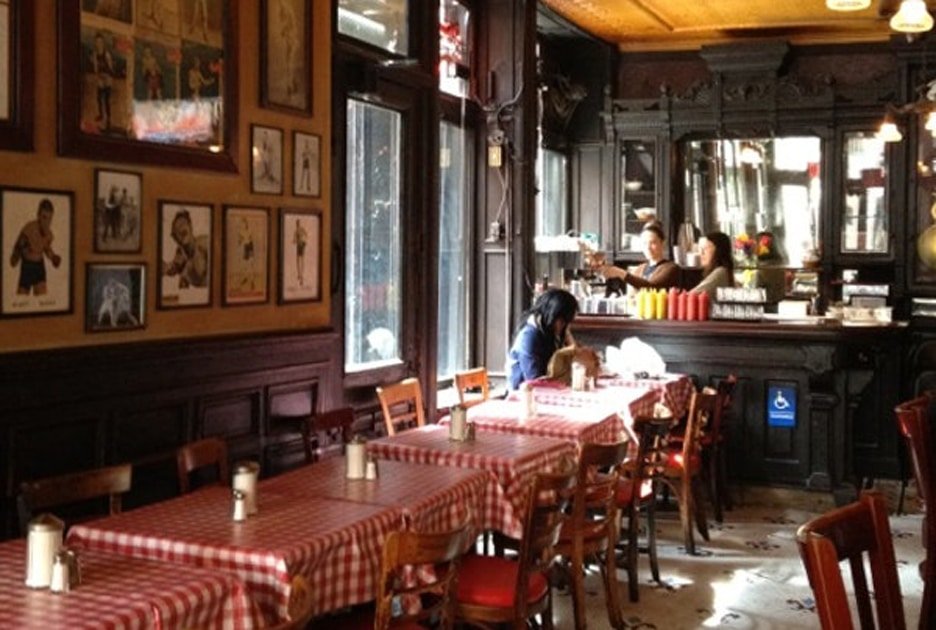
Our New York City Food Guide
On a recent visit to New York, the Hale Mercantile Co. team managed to combine hard work with some serious eats in the city that never sleeps. With a part-time vegan, a gluten free preference and everything in between, each palette was catered for and we managed to combine delicious, tasty food with healthy options that satisfied every price, location and cuisine. Here is our round-up of favourites.
Pietro Nolita
Pietro NoLita is a unique pink jewel box in the heart of Nolita. The cafe serves delicious, healthy, seasonal Italian cuisine with a decor evoking a 50's style diner. The food is "healthy Italian," with a menu that will change seasonally. "The space is fun and kitschy and beautiful, but the food is very important to us" says co-owner Mina Soliman.
Pondicheri
Industrial-chic spot for Indian combo plates & unique dishes inspired by the streets of Mumbai. Pondicheri is an innovative & nourishing Indian food restaurant with locations in Houston & New York. Traditional Indian flavours infused with local & organic ingredients, a full-scale bakery and inventive cocktails.
PS Kitchen
PS Kitchen is a social business and artisanal, gourmet, plant-based restaurant who are committed to creating jobs for those marginalized in New York, donating 100% of profits to sustainable charitable work locally and overseas and providing New Yorkers with delicious food options that are kind to the body and the earth. Amazing raw desserts!
Le Botaniste
Healthy delicious plant-based organic food & natural wine bar. An elegant atmosphere with a vintage apothecary feel complete with staff wearing white lab coats and elixir bottles adorning the walls. Le Botaniste is a responsible food concept that cares about health and the planet. A positive way to appreciate food. 100% Botanical and 99% Organic.
Ippudo
Ippudo opened in 1985 with a counter seating capacity of 10. The interior with a heavy emphasis on wood is like a wood sculptor's studio yet kept sparkling clean with modern jazz playing in the background. Ippudo scrutinizes ingredients and seasonings from around the world to successively create new ramen varieties using some of the various cooking techniques found worldwide. Twenty years since its establishment, Ippudo continues to impact the ramen industry.
La Mercerie Cafe at The Guild
Serving thoughtful reinterpretations of classic French dishes including breakfast, La Mercerie has an all-day menu, coffee, tea, cookies and cocktails. All served in a stunning setting where an immersive shopping experience allows diners to order homewares to go. The food is plated on intentionally mismatched ceramics sourced from Japan, Sweden Australia and Denmark.
Green Symphony
Located just steps away from Times Square, Green Symphony provides a variety of food choices for everyone. This place is a little gem located amongst the fast-food tourist traps of the area. An extensive smoothie and juice menu is the perfect start to a day in NYC with healthy lunch options also available.
Good Dish at Bergdorf Goodman
Bergdorf Goodman is the ultimate ladies-who-lunch shopping destination! Tucked away in the basement of Bergdorf Goodman, Good Dish is more casual than their other eateries. Fresh salads and sandwiches make the perfect stop for lunch in between browsing the store's luxury goods.
Brooklyn Diner
Located in the heart of the theatre district, the Brooklyn Diner is an elegant, more upscale diner for breakfast, lunch and dinner. Their famous chicken soup, Chinese chicken salad and cheeseburger deluxe were all voted the Best of New York by New York Magazine. The pastrami is made on the premises and hand carved to order. Whatever you do, don't forget about the desserts!
Fanelli's Soho
Simple pub food, beer & cocktails are served at Fanelli's; a classic old SoHo pub, dating back to 1847. Classic red and white check tablecloths, an intricately tiled mosaic floor, aged mirrors and a black wooden bar all create a well-worn patina with the intimate, friendly atmosphere of your local haunt.
When in doubt, don't forget Wholefoods Market - the health food gourmand's mecca!
READ MORE
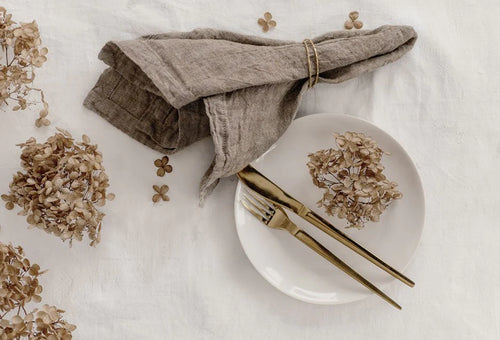
The Christmas Table
Christmas is one of the busiest times of the year and amidst the bustle of preparations, it’s easy to forget about dressing the Christmas table. With the emphasis on the food, often a well-dressed table will make the simplest of fare look appealing. Here are some tips to help you get started with the festive preparations.
Choose a theme
Organising the perfect Christmas day often begins with the table and you need to focus on your vision for the event. Having a theme in mind, gives you the opportunity to be creative and unify the table setting.
Pinterest is a great source for theme ideas and inspiration. You may also like to select your menu for the day first and whether you’re eating indoors or outdoors as this can often set the tone of the table.
Linen
Once you have chosen a theme or colour palette, you can gather your linen or purchase linen napkins in an accent colour. Real linen napkins & tablecloths add texture and a sense of occasion, while at the same time giving it a laid-back feel. If you’d prefer not to have a theme, beautiful table linen allows you to do away with all the ornamentation in favour of a simple, stylish table setting.
Dinnerware
Mixing and matching glassware and crockery can create a distinct look. Layering the table with glasses, stacked plates and lots of linen generates interest and makes a unique setting. Don’t be afraid to play with colour, patterns and texture – these details will bring the table together and create an amazing table for your guests.
Classic, white china is a good base and can be mixed with vintage plates or glasses for an eclectic feel while dinnerware with an earthier palette can be worked for a softer festive table.
Flowers & other adornments
Fresh flowers make a beautiful centrepiece and grouped with candles, create a soft and elegant feel.
If you wish to create a more dramatic effect, you can place fresh blooms or an evergreen runner down the centre of the table or using a smaller sprig at each place setting. An abundance of evergreen will ensure a fresh and festive feel for the table.
Candles add instant atmosphere and a luxury feel to the table and using candlesticks of varying heights can add interest. If space is at a premium, smaller glass votives with tealights are a simple but beautiful addition.
A good tip is to set the table Christmas eve so you don’t need to think about it on the day.
To shop the table linen featured in our images, please click the links below:
Basix Linen Napkin Brun
Basix Linen Runner Brun
Flocca Linen Tablecloth Ayrton
READ MORE
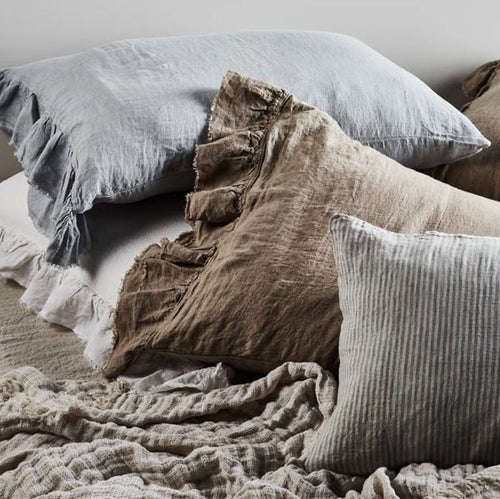
The Essential Bedding Care Guide
Linen is a natural fibre many times stronger than cotton. Its durability ensures products are made to last. Linen is an investment but unlike cotton, linen when cared for correctly has the potential to last much longer before needing to be replaced. This is often why linen sheets become heirloom pieces and is one of the few fibres that becomes better with age, becoming softer and more lustrous. Here we have created your definitive Bedding Care Guide to assist with your linen care and get the best from your luxury linen bedding.
1. WASHING
Whilst we understand linen sheets can be a financial investment, it is important not to relate price to care. To get the most of your linen it must be cared for properly. Always follow the care instructions on the product label. Linen sheets should always be rotated and it is advisable to have at least two complete sheet sets for any one bed for change-over. Using the same set of linen sheets every day is not recommended and keeping multiple sets on hand will also ensure a fresh set is always ready to go on the bed.
Over washing can be damaging to luxury linen and will break down even the highest-quality linen and should be avoided. A gentle warm machine wash is recommended with like colours. Wash your linen bedding separately from towels or clothing and avoid over-filling the machine so the product can move freely during the wash and circulate in the water; this also prevents damage caused by zippers and other fasteners. To maintain the colour of your linen, we advise not to use bleach or detergents with optical brighteners and avoid exposure to continual sunlight. We suggest using a mild liquid detergent such as Wool Mix on all of our linen products. Products such as linen fitted sheets are subject to more friction than any other item in our collection and as a result, they can deteriorate if over used and not cared for correctly.
2. DRYING
We strongly recommend tumble drying our linen, at least partially. Linen will dry more quickly than other fabrics, so the sheets won't need a hot or long dryer setting. It can be tumble dried safely on low to medium heat to keep your linen soft and to maintain its textural appeal. As linen is a very loose weave, if it is subject to constant use and never tumble dried, it is not given the opportunity to return to its original woven state and the constant stretch caused over time will inevitably wear the item out. Our linen has been pre-washed at very high temperatures to ensure that with proper care no further shrinkage should occur. Please note our linen blankets should not be dried in a tumble dryer, but instead line dried out of direct sunlight.
3. STORING
Natural Fibres need to breathe and it is optimal to keep your linen bedding folded flat in a dry, well ventilated environment away from direct sunlight. It is best not to store your linens in a plastic container as this can cause them to yellow over time and can trap moisture, encouraging the growth of mildew. Lining drawers and shelves with high-quality tissue paper and scented sachets helps to counteract moisture and keeps your linen smelling fresh.
With each wash and proper laundering, our linen becomes softer and more desirable, offering a unique sleeping experience and wonderfully tactile products for around the home. HMCo linens are pre-shrunk and pre-washed to ensure our products retain their original quality from the first wash. Our linen sheets and linen duvet covers are the perfect pieces for layering, ruching and draping on your bed, creating a sumptuous haven you won’t want to leave!
READ MORE
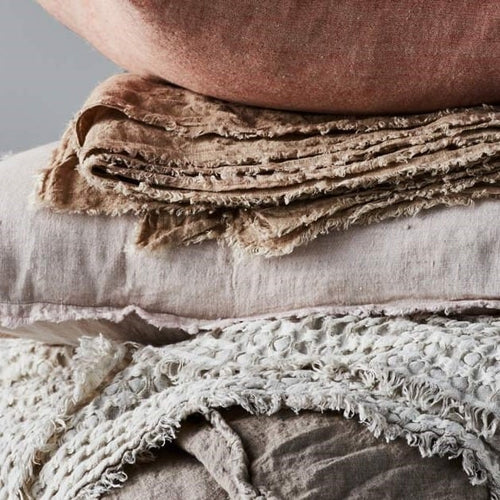
Tricks Of The Trade: Our Five Step Guide To Create The Perfect Bed
Making your bed into a comfortable and calm retreat to rest, relax or rejuvenate requires time, luxurious textiles and careful craftsmanship. Your bed is the focal point of your room and we show you how to go beyond the plumping, straightening and rearranging to create a soothing sanctuary. Nothing beats climbing into a beautifully made bed at the end of the day (or a sneaky daytime nap!).
1. THE BASICS
A bedhead instantly pulls the entire look together and becomes the focal point when layering pillows and cushions. A linen bed skirt will also complete your bed and along with a fitted sheet, are the basics with which to begin your collection. With the addition of a good quality feather pillow and duvet inserts, these essentials are the perfect pieces to begin building your perfect bed sanctuary. Keep the colour palette neutral with these pieces and you can begin to add colour and interest with sheets, pillowcases and other accessories.
2. COLOUR
Many people love the simplicity of an all-white bed but linen bedding is a good way to introduce pattern and colour into a room. It’s easy to change from one season to the next and can give your room a different look and feel each time. If you plan to inject some colour into your bedroom, it’s a good idea to add a pop of colour using items that are easily interchangeable such as stripe pillowcases, colourful cushions or throws. Our linen bedhead is a versatile option with a removable pure linen slipcover; allowing for a seasonal change at a whim. Sometimes just adding one colourful piece can make a bold statement.
3. ARRANGEMENT
You don’t want to overcrowd your bed with lots of pillows and decorative cushions but rather make it look relaxed and welcoming. European pillowcases are a good visual anchor to the bedhead and serve as support when propping yourself up to read. Keeping within your colour scheme, it’s good to work with different shapes and textures and it’s always a good idea to scale up a size with the duvet to create a more lavish look. If a relaxed, textural look is preferred layering your linen will add a sumptuous feel to your bedscape. Overlap pillows, set them at an angle or stack them to complement this look. Finish the arrangement with decorative pillows such as linen bolster cushions, smaller rectangular cushion in a print or stripe, longer body cushion or the ruffled edge of a Kristine European pillowcase. An artfully draped throw cascading to the floor, linen blanket or a ruched sheet will make for a dramatic bed dress while incorporating various design elements for a truly luxurious bed look.
4. TEXTURE
If you prefer a neutral or monochrome look, it’s important to add texture to create a more interesting accent. Completing the look with a linen throw or blanket and mixing up textures will add another dimension. Finishes such as our Flocca edging embellish and add interest and texture and will add contrast to the simple hemmed finish of our Basix pillowcases.
5. QUALITY
Always buy the best linens you can afford. Linen is the perfect choice being a truly beautiful, natural product with an inherent timeless quality derived from flax. Its characteristics make it the perfect choice for luxury linen sheets and household linen. Flax is a wonderfully lustrous fibre many times stronger than cotton and its durability ensures our products are made to last. Natural fibres are the first choice in linen bedding allowing for breathability; keeping you cool and dry in summer and warm in winter. A true luxury linen is best made from individually dyed fine linen yarns and this process ensures colour fastness and a palette beyond compare. Superior quality linen is designed to be relaxed in nature and truly easy care; it should always look beautiful with a minimum of fuss. Perfect for easy living.
Nothing beats getting into a luxurious bed after a long day...
READ MORE

Archivio J.M. Ribot – Capsule I
Citing craftsmanship, innovation and research as their core values, one of our favourite online journals, LE PARADOX' ethos befits HMCo's philosophy of culture, tradition, pride and centuries of craftsmanship. A recently published article by Founder and Editor-in-Chief, Cecilia Musmeci caught our attention where she chats to Italian label Archivio J.M. Ribot and their artisinal approach to creating garments.
Describing Archivio J.M. Ribot's collection as "digging into the past to give a new identity to clothes that have a memory," Cecilia expressed that she "really hopes we will have the chance to actually touch and see the pieces in person as they are truly outstanding. One can sense the incredible craftwork behind each stitching."
So do we.
ARCHIVIO J.M. RIBOT – CAPSULE I
Nostalgia is an active and useful creative tool that brings the old times back.In this spirit, Archivio J.M. Ribot digs into the past to give a new identity to things that have a memory. Officially launched last year, Archvio J.M. Ribot is a research clothing project split in two capsule collections: Riforma, consisting of one-of-a-kind pieces created by combining antique parts of clothing from early 20th century, and Archivio, a series of limited edition garments made with ancient fabrics collected in a textile archive throughout the years. The concept that inspired the project subverts codes of sartorial conservatism, showcasing a great engagement with craft...
READ MORE
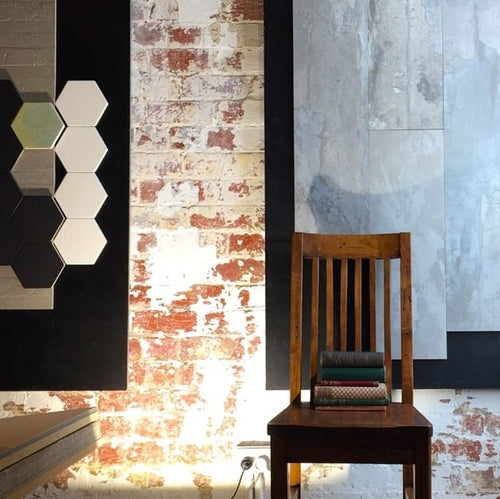
On The Tiles
It would be hard to imagine anyone more passionate about ceramics, and the more imperfect the better.Interior designer Janine Vasta takes us to meet Justin van Nierop, artisan, designer and founder of the Melbourne tile gallery Urban Edge Ceramics.
Justin van Nierop started Urban Edge Ceramics 15 years ago in an inner city Richmond warehouse that he says had seen better days. “It was supposed to be a hobby project, a toy.” Justin set up the showroom after the pace of the successful Sydney renovation company he ran with his sister left him looking for something more low-key.
Instead the thriving business now sees him crossing the globe several times a year in search of the best and latest surfaces in Europe and beyond. But meeting Justin you get the feeling that nothing he does stays small for long. He’s the kind of person who reminds you that success really can come from following your passion and trusting your own sense of style. Oh, and that perfection is way overrated.
The highly skilled Portuguese artisans Justin has teamed up with to produce his latest collection had a hard time understanding that he wasn’t seeking a faultless tile. “The first samples they produced were just too perfect,” he says. “It was a really difficult process. They just didn’t believe that we actually wanted the tiles to have wobbly edges and for the glaze not to be perfectly even and flat.”
Justin says that his partners in the new range are Portugal’s only government certified producers of ceramic tiles. “They kept looking at us and saying, ‘but no!’,” he laughs. “These guys have been conditioned to create the perfect handmade tile. It was a bit of a shock when we actually wanted them to relax a bit.”
The result, “Fifth Element Handmade Tiles”, is completely artisan-made, from sourcing and mixing the clay and grinding the pigments for the glaze to the firing process that creates the little imperfections that make every tile in the collection unique. “Everything is done as it has been for centuries,” he says. Laying them out on the table back in Melbourne, Justin looks like a proud father. He loves them. He dreams about them he tells me unashamedly. “They’re my gems.”
This isn’t such an odd analogy when you consider Justin trained as a goldsmith in Sydney and spent his childhood fixing old watches with his father, a Dutch watchmaker and jeweler. The youngest of five and the only boy, he learnt from his father to love and respect handmade objects and the artisans who create them. This passion for craft and the happiness that comes from beautiful textures and surfaces shapes the collection at Urban Edge Ceramics.
Justin’s Dutch-born mother played her part too, making everything at home from bread and cakes to clothes by hand. “Nothing was bought," he says. “It was the seventies and there was a lot of sameness but everything we had was handmade.” Fast forward to 2015 and Justin thinks his mum’s handmade fashion would be way cool today. “Handmade clothes, handmade food, handmade whatever is cool now,” he says. “It’s self-expression. Whatever is cool for you is cool.”
For Justin, along with his fierce anti-sameness ethos, certain inspirations never falter. When I ask him where he finds most of his products for UEC he’s quick to single out Italy as his go-to place for everything from lifestyle and coffee to tiles. “The Italians are the best,” he says. “I know them and I know their quality is going to be first class."
But he’s also ready to add a new muse to the list. “Lisbon is amazing,” he says, recounting the story of a dinner for two in the Portuguese capital (Justin works and travels with his partner Mia) that turned into a late night sightseeing tour with the local couple at the next table. “The Portuguese are so open, ” he says. “They say ‘this is our style’ but they’re not too proud to reinvent themselves and try new things. I could move there tomorrow."
READ MORE
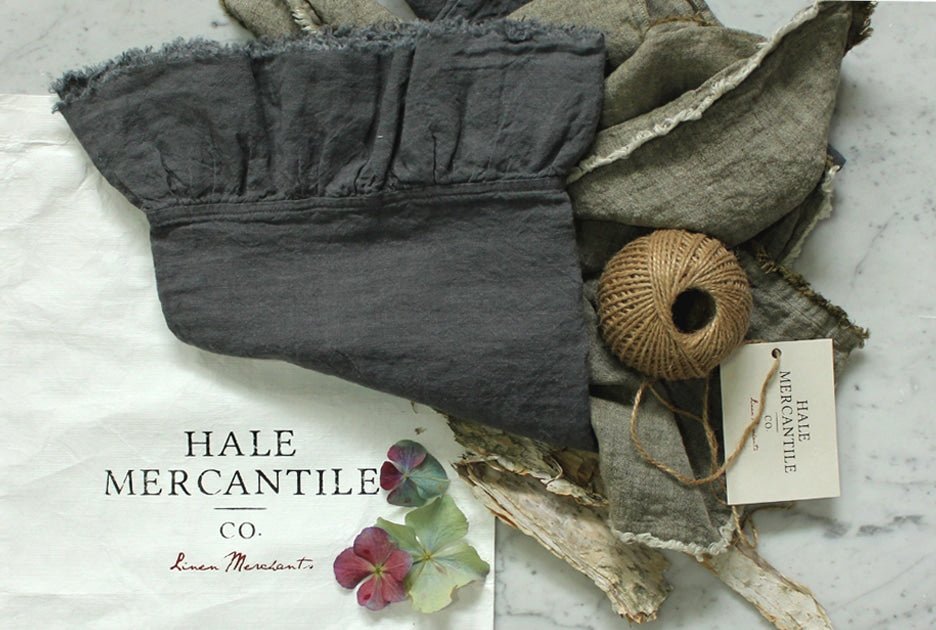
Natural, Slow and Simple
In a time when we are bombarded with superficiality, through social media, technology and materialism, our desire for a natural aesthetic is increasing. With many choosing to grow their own food, buy organic products and purchase fewer possessions, leaving a small ecological footprint is very much in vogue.
The slow movement, which spreads across food, fashion, art and much more, encourages us to slow down to appreciate the joy in making things from scratch. Through enjoying home-cooked meals, bespoke fashion and handmade objects for example, many consumers are turning away from cheap, mass-produced products.
There is great satisfaction in purchasing something that has been made with care, natural materials and ethical principles. Despite such products often costing more, they last longer, wear better, and in fact, usually improve with age. As consumers, it is important to make ethical decisions based on the environment and the working conditions of those who make them.
An article in Trend Bible states that consumers are “looking for longevity and provenance in the products they invest in for the home” and that they have a desire to slow down their lives. The article talks about consumers taking control of their environments by purchasing quality pieces for their homes and supporting local enterprises.
Design Sponge founder Grace Bonney also writes about the pleasure of taking a slow approach to the home. “I find that slowness is something that both defines and refines my aesthetic over time and allows me to make decisions that are based more on long-term happiness than short-term gratification,” Bonney says. Her article goes on to describe the challenge of finding a balance between our desire for beautifully made products while seeking low price points.
Materials such as pure linen, that are natural and of a higher quality will always be more expensive. Similarly, if products are produced by small companies and independent designers, the price of this workmanship must be taken into account.
Perhaps the answer lies in buying fewer items and savouring the process. Like a slow movement in consuming. This way, we can decorate our lives with products that are carefully considered, which eliminates the chance of us growing tired of them. By gradually acquiring possessions, we can avoid waste, which will benefit the environment together with our purse strings. It is also rewarding to collect things that have a positive background story.
Possessions with a story attached are something Megan Trousdale writes about for Slow Living Magazine. Trousdale has written about houses and interiors for over 20 years, and describes the idea of “slow interiors” and the beauty in acquiring pieces over time, making your own and purchasing antiques. “It is the interiors layered over decades, not days, that have the most soul and meaning,” Trousdale says.
Another aspect of pursuing a natural, simple and slow aesthetic is accepting imperfections. This might be in the form of coveting a well-loved piece of furniture, an eccentric family heirloom or repairing a damaged item instead of throwing it away. It is true that many natural products are imperfect, but through altering our perceptions of these blemishes, we can come to see them as uniquely beautiful, and indeed more desirable than those without flaws.
READ MORE
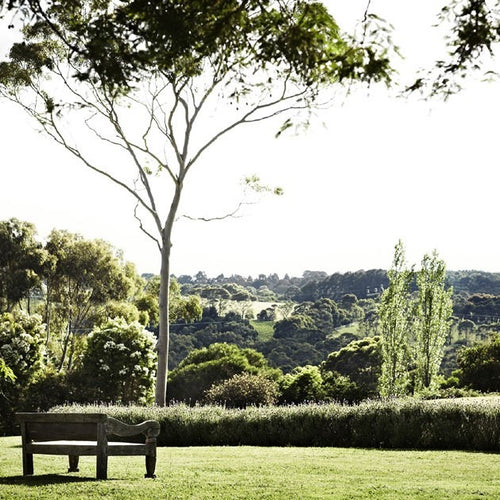
Orchard Keepers’ Poss Sampieri
Orchard Keepers is a superb 10-acre property nestled among the vineyards and orchards of Red Hill on Victoria’s Mornington Peninsula. There are three cottages that have been standing since the 1890s and 1950s, which have been restored and rejuvenated to create the ideal holiday accommodation with a touch of luxury.
When I phone Poss Sampieri early one Monday morning to arrange a time for this interview, she is busily changing linen bedding after a full weekend of guests. Since opening Orchard Keepers in 2013, her hands-on approach has well and truly paid off.
Warm and vivacious, Poss is the first to admit that maintaining Orchard Keepers requires a huge amount of work. However, she does it with passion, which makes the effort possible, and ultimately, deeply rewarding. “Unless you are actually prepared to do it yourself, get your hands dirty and feel it, it’s not going to work,” she says.
A 24-year background in sales and marketing with Ansett and Air New Zealand has given Poss a wealth of knowledge to apply to running Orchard Keepers, some of which is purely innate. Every detail of the business is carefully considered, from the slick website to the fresh flowers in each room, which are lovingly sourced from local gardens.
Indeed, Orchard Keepers is attracting guests from as far as Singapore, England and America due to her business savvy and dedication to creating a “chic country” escape. Sweeping sea views, an established garden and children’s playground are just a few of the details that make Orchard Keepers stand out. Antique furniture, original artworks, Grown Alchemist and Hale Mercantile Co. bedlinen ensure guests feel suitably indulged.
“The biggest thing for me is that people appreciate the space and feel at home,” she says. “I don’t want Orchard Keepers to be a design success and for people to go there and think it’s awful. I always say it’s not about how it looks, it’s about how it feels.”
After deciding to open a holiday retreat, it took Poss three years to find the right location. Initially she was interested in the neighbouring property but when Orchard Keepers came up for sale, she bought it immediately (it had only been on the market for two days). The charm of the old cottages, beautiful garden and surrounding scenery completely won her over.
Running the business hasn’t been without challenges, but Poss always manages to find clever and positive solutions. You can’t foresee issues that may arise before beginning a business, but these are the things that strengthen your approach and grow your wisdom. “It’s a fine line between picking up on things and becoming too cynical,” she says. “You have to just allow things to happen and you have to let them go.”
Poss says that Orchard Keepers wouldn’t be what it is without the people she works with and is quick to sing their praises. Every few months, she takes her small team out for a meal to touch base and express her gratitude. This open-hearted nature is characteristic of everything she does.
“All the people I work with are not picked randomly, they are who they are because I need them and I know I can’t run the business without them,” she says. “It was basically getting the best people, putting them all together and making it happen.”
Never in her wildest dreams did Poss imagine Orchard Keepers would be such a hit. The picturesque property is already booked out until November 2016, and the future is bright. She has bonded with the Red Hill community, and works closely with local wineries, restaurants, builders and gardeners. Poss is keen to open another holiday retreat in the area, one that offers the same unique features of Orchard Keepers, but with a different design aesthetic.
It seems that part of Orchard Keepers’ success stems from the energy Poss injects into the business and her generous philosophy. With editorials in Elle Decor Ukraine and Condé Nast, Germany, Canada and more, obviously she is doing something pretty special.
“In the last six years of my corporate life I commuted to Sydney every week, so on a Monday morning I’d get on a plane to Sydney and stay for two or three days and I’ve got three kids. I was sometimes in Perth, Brisbane, New Zealand and the States,” she says. “Now when I go to work, I drive down the peninsula, I drive up the driveway with a beautiful hedge and I see the workers’ cottage, which is 150 years old. It’s just such a nice place to be.”
READ MORE




